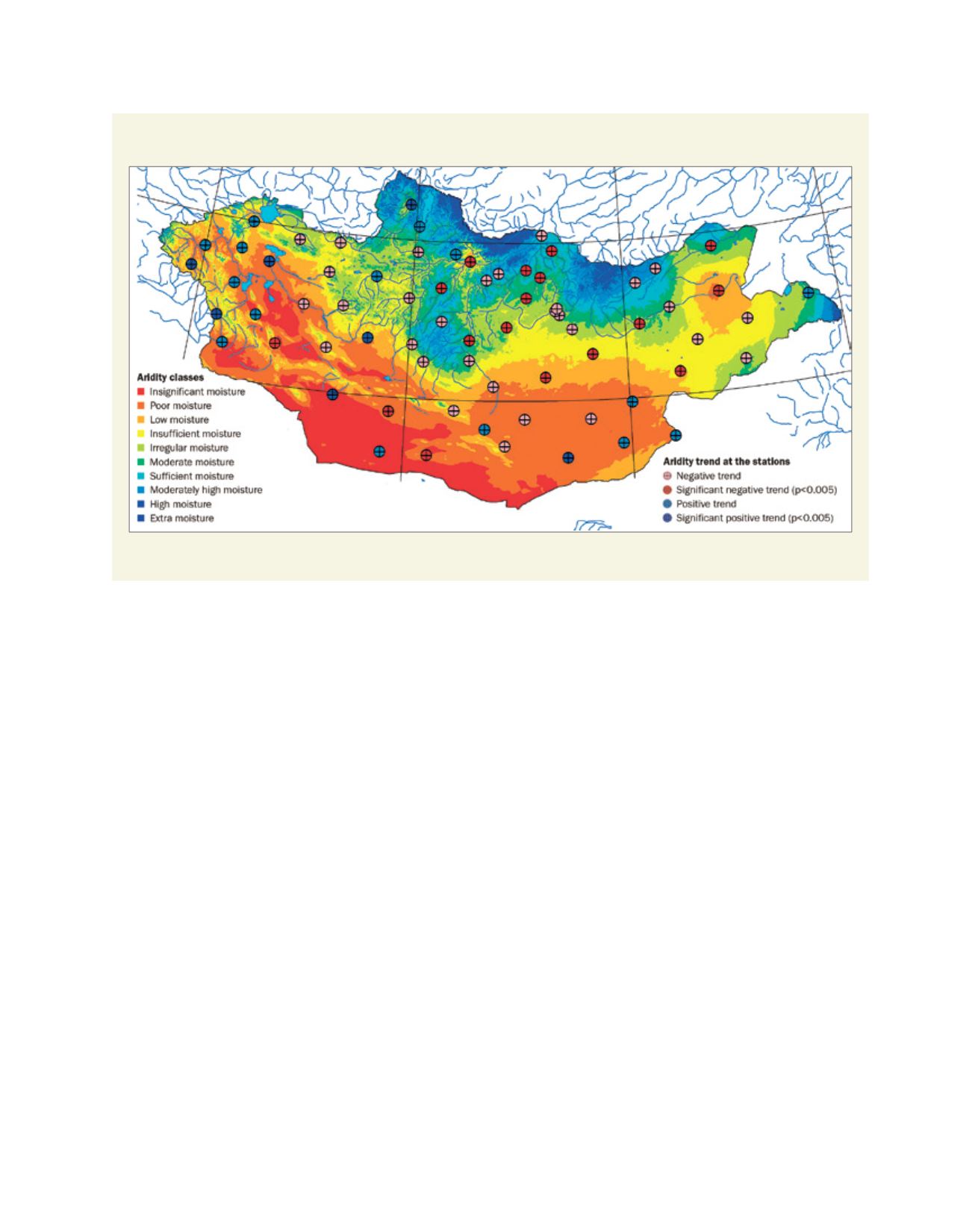

[
] 47
which was unsustainable use of pasture exceeding the carry-
ing capacity. ‘New generation’ herders have poor knowledge
of pasture use, and have limited experience in haymaking and
pasture rotation and fencing to support natural regeneration.
The UNDP project provided support for the formation of
herder groups and a series of training opportunities with field
demonstrations on pasture management, hayfield fencing,
soil quality improvement and maintenance techniques, and
methods of planting alfalfa and barley. In 2009, the train-
ing courses organised by the UNDP project enrolled over
2,600 participants, 60 per cent of whom were women. After
the training, with the project’s support, herder communities
fenced off 12 hectares of pasture in the Taats river valley in
2009. The project also provided technical assistance in restor-
ing old water ditches and establishing a borehole well to be
used in case of severe water shortage. The plot was used by a
former state collective farm to grow barley and for haymak-
ing over 20 years ago. However, due to irrigation difficulties
caused by continuously declining water levels, herders had
slowly abandoned crop farming.
In 2009, under the technical guidance of the UNDP project,
the ‘Bayantuhumiin Uguuj Horshoo’ herder group planted
alfalfa in 2.2 hectares, barley in 1 hectare, and 10 ha of land
was used for haymaking. Due to their collaborative efforts to
maintain hayfields, fencing and improved irrigation, herders
were able to once again harvest crops and prepare their own hay
for winter. The herder community harvested 2.5 tons of alfalfa,
2 tons of barley and 80 tons of hay that fully meet their needs.
The herders who worked on the hayfield established
a formal herder group involving 10 households and 23
members in 2010. The group leader, Mr D. Tumurchudur,
says: “We worked as one to rest our field from livestock, irri-
gated and used organic fertilizers, which rewarded us with a
good amount of hay. Because of the hay we reserved, we did
not lose a single lamb in the past severe winter. Neighbouring
herders now come to us to learn from our experience.”
He also stated that herders can harvest five times more hay
from one hectare by merely supporting natural regeneration.
Initially, the herders were pessimistic about planting new
crops. However, after seeing the first results, the community
was very much inspired. Herder group women made barley
flour and as well as using the flour for household needs, the
excess was sold on the provincial market generating a revenue
of Tog 500,000 (approximately US$385). The herder group
won first place by participating in the brand product fair of
Uvurkhangai province.
Following the experience of the Bayantuhumiin Uguuj
herder group, five new groups with 43 households were estab-
lished in 2010, all working on soil improvement and pasture
management. With UNDP support, the herders have created
added value and alternative income opportunities aside from
livestock husbandry through small-scale vegetable farming,
diversified diary and wool products.
With UNDP support, the annual soum-wide pasture/land
management plan is developed and implemented with herder
community participation, which will be the basis for signifi-
cantly reducing degraded land towards the end of the project.
The UNDP-supported herder groups have pioneered a revival
of collective action for pasture management and the preven-
tion of land degradation.
Aridity trends measured by Mongolia’s meteorological observation stations
Source: Min. Env. Mongolia
L
iving
L
and
















